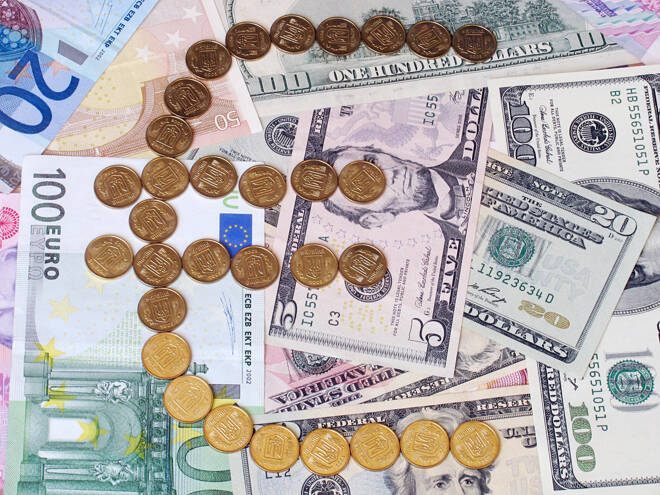Advertisement
Advertisement
Economic Sentiment and GDP Figures Give the EUR a Boost
By:
Economic data from Germany and the Eurozone give the EUR an early boost. Economic Sentiment figures and 2nd estimate GDP numbers were in focus.
It’s a relatively busy day on the Eurozone economic calendar today. Eurozone 4th quarter GDP numbers and Economic Sentiment figures for Germany and the Eurozone were in focus.
Eurozone GDP Revised Upwards
According to 2nd estimates, the Eurozone economy contracted by 0.6% in the 4th quarter. This was an upward revision from a 1st estimate 0.7% contraction.
Year-on-year, the economy contracted by 5.0%, which was also an upward revision from a 1st estimate 5.1% contraction.
According to Eurostat,
- The number of employed persons increased by 0.3% in 4th quarter, compared with the previous quarter.
- In the 3rd quarter of 2020, employment had increased by 1.0%.
- Year-on-year, however, employment was down by 2.0%.
Economic Sentiment Surprises
Germany’s ZEW Economic Sentiment Index rose from 61.8 to 71.2 for February. Economists had forecast a fall to 59.6.
The upside came in spite of sentiment towards current conditions fell deeper into the red. For February, the ZEW Current Conditions Index fell from -66.4 to -67.2. Economists had forecast a decline to -67.0.
For the Eurozone, the Economic Sentiment Index jumped from 58.3 to 69.6.
Market Impact
Following some disappointing stats last week, the EUR found some immediate support in response to the stats.
In response to this morning’s economic data, the EUR rose from $1.21527 to a post release high of $1.21569 before easing back. Despite the better than expect numbers, the EUR failed to revisit a current day high $1.21573 struck ahead of the data release.
At the time of writing, the EUR was up by 0.22% to $1.21547.
For the European majors, the DAX30 recovered from negative territory, with the EuroStoxx600 heading back towards its pre-data release high.
At the time of writing, the DAX30 and the EuroStoxx600 were up by 0.10% and 0.20% respectively.
About the Author
Bob Masonauthor
With over 28 years of experience in the financial industry, Bob has worked with various global rating agencies and multinational banks. Currently he is covering currencies, commodities, alternative asset classes and global equities, focusing mostly on European and Asian markets.
Advertisement
